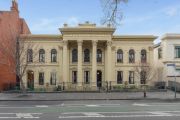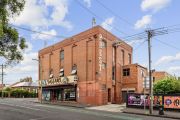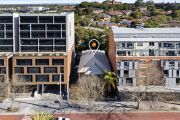
Where is the Melbourne office market going?
Vacancy rates are high, but building is at record levels. What factors are driving the Melbourne office market?
In a November 2014 article in The Sydney Morning Herald, Simon Johanson points out that Melbourne’s CBD fringe office market saw a record $1.58 billion in transactions over the year to September. Transactions in Docklands, St Kilda Road and Southbank were 126 per cent higher than 2013 and more than double the five-year average. This trend has continued in 2015, despite some concerns that the market had peaked in 2014.
At the same time, office vacancy rates were 9.4 per cent, but interestingly this wasn’t deterring investors. Throughout Melbourne, commercial office transactions were up 54 per cent and confidence was high that vacancy rates would soon drop. Has anything changed in 2015? What do the experts predict for the near future?
What’s driving the Melbourne office market?
A 2015 report by m3 Property Strategists analyses the factors that impact the Melbourne office market. Some of the negative factors include:
- Subdued economic growth.
- A modest decline in business confidence in some sectors.
- A soft labour market.
These factors are partially offset by growth in the white-collar sector of the labour market. While unemployment is higher overall, white-collar employment in Victoria was up by 2 per cent in 2014 and the trend was expected to continue. In addition, the Victorian Department of Treasury and Finance predicts moderate economic growth to continue – due in part to a lower exchange rate and low interest rates.
Where is the strongest growth in the office market?
The trend in Melbourne is towards prime office space. According to m3 Property Strategists’ statistics:
- The prime vacancy rate in January 2015 was 7.9 per cent. This was down from a 9 per cent peak in July 2013.
- The premium vacancy rate in January 2015 was 5.7 per cent, a decline from July 2014’s vacancy rate of 7.2 per cent.
- A-grade vacancy rates increased from 6.6 per cent to 8.5 per cent, but a 77,000m2 increase in supply contributed to the increase.
As this “flight to quality” took place, the B-grade vacancy rate rose to 12.5 per cent, more than twice the low of 5.7 per cent in July 2012.
Factors contributing to investment
Sales activity for office properties valued at over $5 million was strong in 2014, with sales for the year of $2.9 billion. This was a 5.4 per cent improvement over 2013. This trend continues in 2015, with unlisted funds and overseas investors being the largest component of sales. Sales are expected to grow for a variety of reasons:
- Institutional investors are looking for opportunities in the Melbourne CBD.
- The Australian office market, particularly in Sydney and Melbourne, is attractive to foreign investors who view Australia as a low-risk investment destination compared to other countries.
- The decline in the value of the Australian dollar makes Australia attractive to foreign investors.
Low yields, the current over-supply and a soft leasing environment are dampening factors, but Colliers International reports high enquiry rates for the Melbourne CBD. In addition, absorption rates are high in the Melbourne CBD, with A-grade properties being the strongest at over 22,700m2.
In spite of the short-to-medium term risks, there is good reason to be cautiously optimistic about the Melbourne office market. While traditional employment figures are down, employment in sectors such as information; media and telecommunications; scientific and technical services; and administration and support services are up. These services are looking for quality office space in Melbourne.










